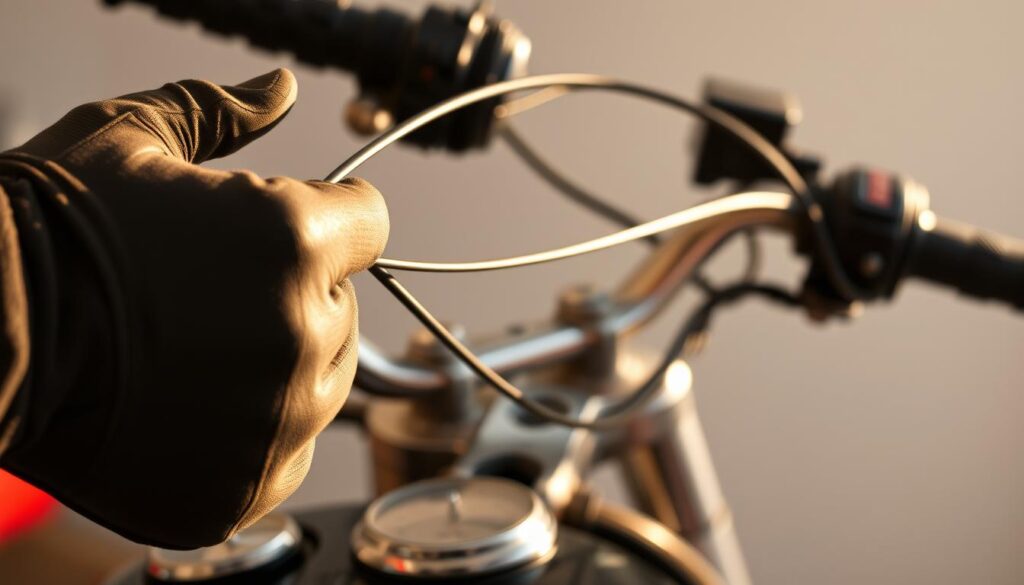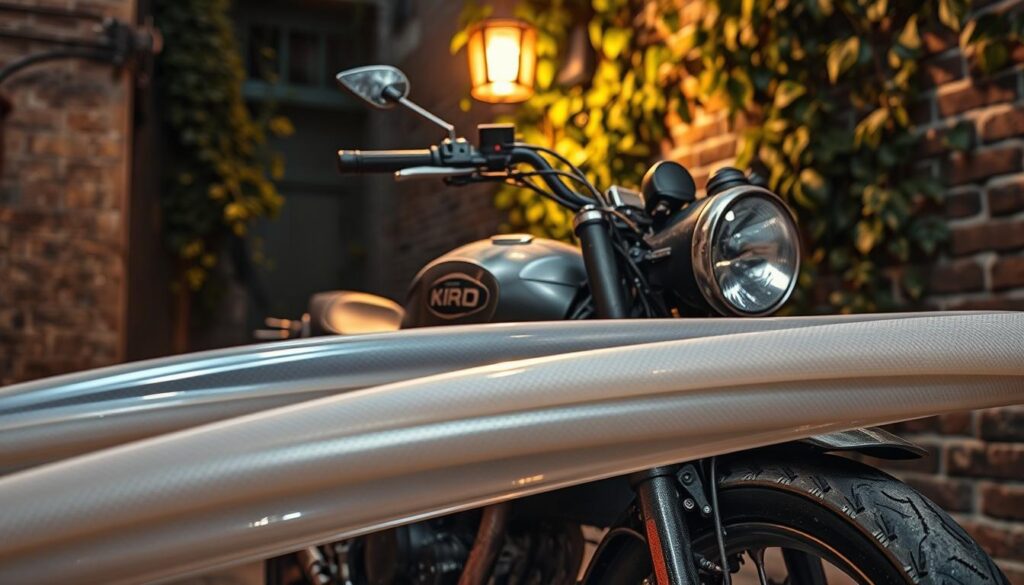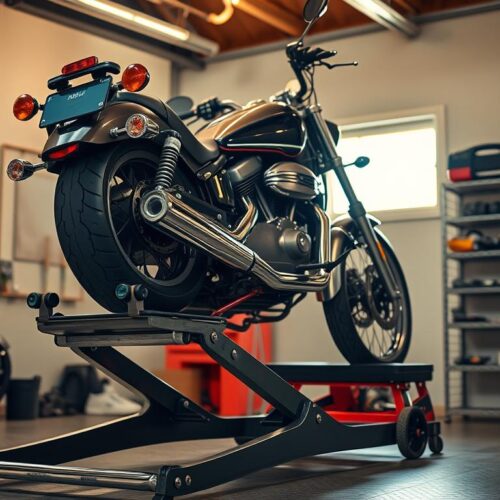Looking after your motorcycle cables is critical for great performance and your safety. These cables, like the clutch and throttle, are your bike’s heartbeat. They ensure it works well. If you ignore cable upkeep, you could face serious problems, maybe even getting stuck somewhere unexpectedly.
Knowing how to maintain these cables means your motorcycle parts last longer and work better. This guide will show you the importance of regular checks and changing parts when needed. With this knowledge, you’ll feel more secure riding, confident your bike is in excellent shape.
Understanding Motorcycle Cable Types
Motorcycle cables are key to how your bike works. Knowing about different cables helps you keep your bike running smoothly. The main ones are the clutch and throttle cables, each doing important jobs for your bike.
The clutch cable links the clutch lever to its mechanism. This lets you change gears easily. If this cable has problems, shifting gears becomes hard. Check it often to keep it working right.
Meanwhile, the throttle cable manages air and fuel going to the engine. It controls how fast you go. If this cable gets damaged, your bike won’t respond well. So, it’s crucial to keep an eye on it.
Learning about these cables helps you spot wear and tear early. Noticing damage early means you can fix it before it gets worse. This keeps your motorcycle in top shape.
Tools You Need for Cable Maintenance
It’s vital to gather the right tools needed for cable maintenance for good motorcycle care. Start with essential motorcycle tools every rider needs. Pliers and a variety of screwdrivers will make adjustments and repairs simpler.
Also, think about getting specialized tools like cable lubers. These make it easy to lube your motorcycle cables without removing them. This saves time and effort during cable maintenance. Using top-quality lubricants made for motorcycle cables ensures they work well and last longer.
Having these tools means you can do regular check-ups and fixes as needed. Choosing the right equipment helps keep your bike safe and working better.
Routine Inspection: Keeping Cables in Check
Checking your motorcycle cables regularly is key to keep them working well and safely. It helps you find issues like wear or fraying early on. First, look at the cables closely for any damage. Focus on areas where they bend, as these spots can show stress first.
Make sure controls like the throttle and brakes are smooth to use. If they’re sticky or not responding well, they might need attention. Now is also a good time to clean off any dirt that could affect how they work.
Watch out for rust or corrosion, especially on the cable connectors. If you ignore rust, it can cause major damage and lead to expensive repairs later. Setting up a regular check-up for your cables helps catch problems early. This keeps your motorcycle running longer and ensures safer rides.

| Inspection Aspect | What to Look For | Importance |
|---|---|---|
| Visual Wear | Fraying or broken strands | Prevent cable failure |
| Smooth Operation | Responsive controls | Ensure safety while riding |
| Rust and Corrosion | Signs of oxidation | Maintain cable integrity |
| Flex Points | Stress marks or kinks | Avoid cable fatigue |
Cleaning Your Motorcycle Cables
Keeping your motorcycle cables clean is crucial for top-notch bike performance. Dirt and debris build-up can cause friction, making cables work poorly. Cleaning is especially important after rides in tough conditions to prevent performance issues. This will help you avoid problems before they start.
To keep your cables clean, here are easy steps to follow:
- Prepare a mild cleaning solution. A mix of water and degreaser works well.
- Use a soft cloth to wipe the cable surfaces. Avoid abrasive materials that may scratch.
- Focus on areas that tend to collect grime, such as ends and junctions.
Regular upkeep of your cables improves lubrication and fights corrosion. This effort will make your motorcycle cables last longer. Plus, it ensures smoother rides.
| Cleaning Step | Action | Frequency |
|---|---|---|
| Prepare Cleaning Solution | Mix water and degreaser | As needed |
| Wipe Down Cables | Use a soft cloth | After each ride in harsh conditions |
| Inspect for Damage | Look for fraying or corrosion | Monthly |
Lubricating Motorcycle Cables
Lubing cables is key for great motorcycle performance and for them to last longer. It reduces friction and makes cables work smoother, which makes them last longer. Without lubing, cables can get stiff and wear out faster, hurting how well your motorcycle works.
Using the right lubricant, made for motorcycle cables, is super important. These lubes go deep into the cables, protecting them from things like water and dirt. Using a lubricant injector helps get the lube everywhere it needs to be, without any mess.
Take extra care of your throttle and clutch cables. Cables that are well-lubed will make your bike respond better. This makes riding more fun and safe. It’s important to lube your motorcycle cables regularly. Some say to do it every few hundred miles, but adjust based on where and how you ride.
| Type of Cable | Recommended Lubrication Frequency | Benefits of Lubrication |
|---|---|---|
| Throttle Cable | Every 500 miles | Smoother operation, faster response |
| Clutch Cable | Every 500 miles | Reduced wear, improved control |
| Brake Cable | Every 700 miles | Enhanced braking efficiency, safety |
Protecting Cables from Environmental Damage
Moisture, heat, and dirt can really hurt your motorcycle cables. Keeping them safe from these things is key to their good work and long life. By following some easy steps, you can protect them from environmental harm.
Using protective sleeves is a smart move. They keep your cables safe from bad weather. Cleaning them well and often is also important, as dirt can cause rust and damage. Make sure to check and clean them, especially after riding in bad weather.
Keeping your motorcycle in a garage helps a lot in protecting it. If you must park outside, use a cover that resists weather and sunlight. Also, check how your cables are set up. Avoid sharp bends and make sure they’re not too tight. This helps them last longer.

Replacing Damaged Motorcycle Cables
It’s important to replace motorcycle cables to keep you safe and your bike running well. Look for signs like breaks or wear to avoid accidents and make your motorcycle last longer. Always check your cables for any sign of damage.
If your cables are damaged, it’s time to fix them. Follow these steps to replace them:
- Gather your tools: Get a wrench set, pliers, and the right replacement cable for your bike.
- Disconnect the existing cable: Remove the damaged cable from its spots carefully.
- Inspect the surrounding components: Check other parts are okay before putting in the new cable.
- Install the new cable: Put the new cable in the same way as the old one and attach it.
- Perform a function test: Make sure everything works fine with the motorcycle controls after setting up.
Always use OEM replacement parts for your motorcycle. They fit perfectly and work the best, giving you a worry-free ride. Keeping up with maintenance and replacing cables when needed helps avoid dangers on the road.
Connecting Cables Correctly
Connecting motorcycle cables right is key for them to work well and be safe. Whether it’s throttle, clutch, or brake cables, you must follow best practices. This ensures a solid and correct connection. Start by carefully aligning the cables to their parts. A good connection means no slack or extra tension, avoiding problems.
During cable installation, think about how the cables lay. They should not touch things they shouldn’t and stay away from sharp turns. Always check for damage before putting them in. This prevents issues later on. After connecting, double-check to make sure everything is as it should be.
Bad installation can mess up your motorcycle’s performance and be dangerous. Learning the right way to connect cables makes you good at caring for your motorcycle. This knowledge boosts your confidence both in riding and fixing your bike.
Conclusion: Best Practices for Cable Longevity
Making sure your motorcycle’s cables last long is crucial for safety and performance. Following top tips for motorcycle maintenance can really make a difference. Regular checks for damage, along with regular cleaning and lubing, keep things working smoothly.
It’s important to protect your cables from environmental harm to boost their toughness and your riding joy. Replacing worn-out cables on time helps avoid expensive fixes later. Staying committed to these practices ensures your ride is always ready to go.
How well you look after your motorcycle’s cables affects your safety and fun on the road. Use these maintenance tips to build a stronger bond with your bike and enjoy every ride more. Just a bit of upfront effort can help maintain your cables’ integrity and performance for the long haul.




